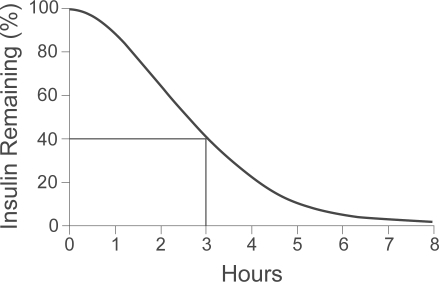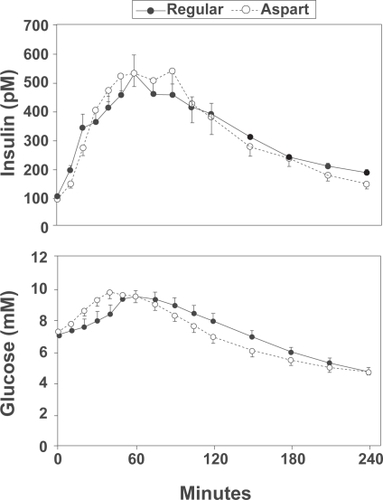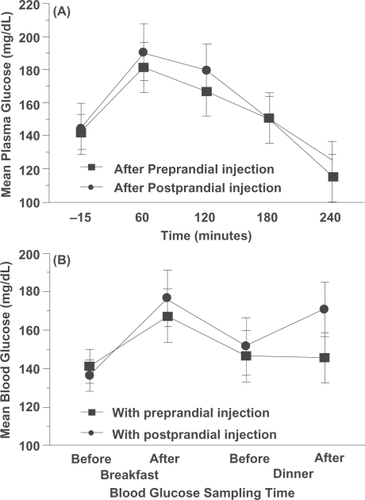Figures & data
Table 1 Concerns about the use of insulin in older people
Figure 1 The timing of action for insulin aspart. A euglycemic clamp is used for delivery of the insulin aspart (0.2 units/kg of body weight, delivered into the abdomen). The use of this graph helps patients avoid “insulin stacking”. For example, 3 hours after the administration of 10 units of insulin aspart, one can estimate that there is still 40% times 10 units, or 4 units, of insulin remaining. Reproduced with permission from Hirsch IB, Insulin analogues. New Engl J Med. 2005;352:174–183.Citation14 Copyright © 2005 Massachusetts Medical Society. All rights reserved.

Figure 2 Insulin and glucose values during the test meal in response to regular insulin and insulin aspart in 19 patients (10 males and 9 females), age 72 ± 1 years, BMI 27 ± 1 kg/m2 and HbA1c 6.4 ± 0.1% and diabetes duration <5 years. Reproduced with permission from Meneilly GS. A comparison of insulin aspart and regular insulin in elderly patients with type 2 diabetes. Diabetes Obes Metab. 2007;9(5):754–755.Citation22 Copyright © 2007 Blackwell Publishing.

Figure 3 Glycemic profiles at the end of each treatment period. Ninety-three elderly patients (≥65 years) were treated with bid pre-prandial injections of BIAsp 30 during a 2-week run-in period and subsequently randomized to a 4-week treatment with either pre- or post-prandial bid BIAsp 30, followed by crossover to the other regimen for 4 weeks. Reproduced with permission from Warren ML, Conway MJ, Klaff LJ, Rosenstock J, Allen E. Postprandial versus preprandial dosing of biphasic insulin aspart in elderly type 2 diabetes patients. Diabetes Res Clin Pract. 2004;66(1):23–29.Citation23 Copyright © 2004 Elsevier.
